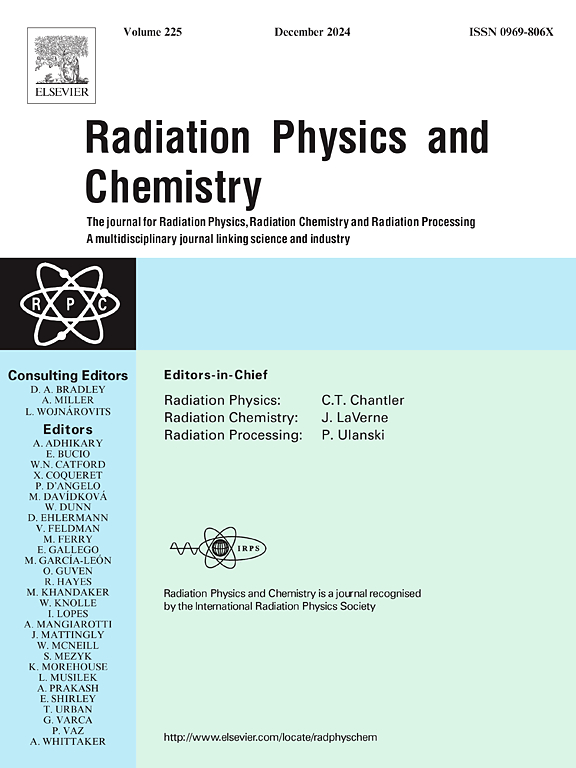Fabrication of Kevlar based shielding material for attenuation of ionizing radiations
IF 2.8
3区 物理与天体物理
Q3 CHEMISTRY, PHYSICAL
引用次数: 0
Abstract
The aim of this study is to fabricate a flexible, lightweight and less toxic alternative to pure lead for shielding against ionizing radiation. Composite material based on room temperature vulcanizing silicone rubber with different weight percentages of tungsten carbide, bismuth oxide and a smaller percentage of lead enrichment with Aramid fibre were fabricated. The mechanical parameters like tensile strength, percentage elongation at break, and physical property like density were measured for the prepared composites. Scanning Electron Microscope (SEM) and Energy dispersive X-ray spectroscopy (EDS) was performed for visualisation and characterization of the prepared composite. Radiation attenuation parameters like determination of Half Value Layer (HVL), Tenth Value Layer (TVL), Linear attenuation coefficient (LAC) & Mass attenuation coefficients (MAC) were carried out. Morphological and mechanical observations showed that the composition with 20% tungsten carbide: 60% Bismuth Oxide and 20% Lead showed superior mechanical properties as the concentration of Bismuth Oxide increased across the filler matrix. The sample prepared with 40 % tungsten carbide: 40% Bismuth Oxide and 20 % of Lead (TSN 3) exhibited good radiation shielding properties against the commonly used radioisotopes. Monte Carlo Neutron-Photon (MCNP) Simulation tools, are used to estimate the attenuation parameters, which are later experimentally determined using a radioactive source (Cesium-137) and Sodium Iodide detector for TSN-3 with the elemental composition.
求助全文
约1分钟内获得全文
求助全文
来源期刊

Radiation Physics and Chemistry
化学-核科学技术
CiteScore
5.60
自引率
17.20%
发文量
574
审稿时长
12 weeks
期刊介绍:
Radiation Physics and Chemistry is a multidisciplinary journal that provides a medium for publication of substantial and original papers, reviews, and short communications which focus on research and developments involving ionizing radiation in radiation physics, radiation chemistry and radiation processing.
The journal aims to publish papers with significance to an international audience, containing substantial novelty and scientific impact. The Editors reserve the rights to reject, with or without external review, papers that do not meet these criteria. This could include papers that are very similar to previous publications, only with changed target substrates, employed materials, analyzed sites and experimental methods, report results without presenting new insights and/or hypothesis testing, or do not focus on the radiation effects.
 求助内容:
求助内容: 应助结果提醒方式:
应助结果提醒方式:


